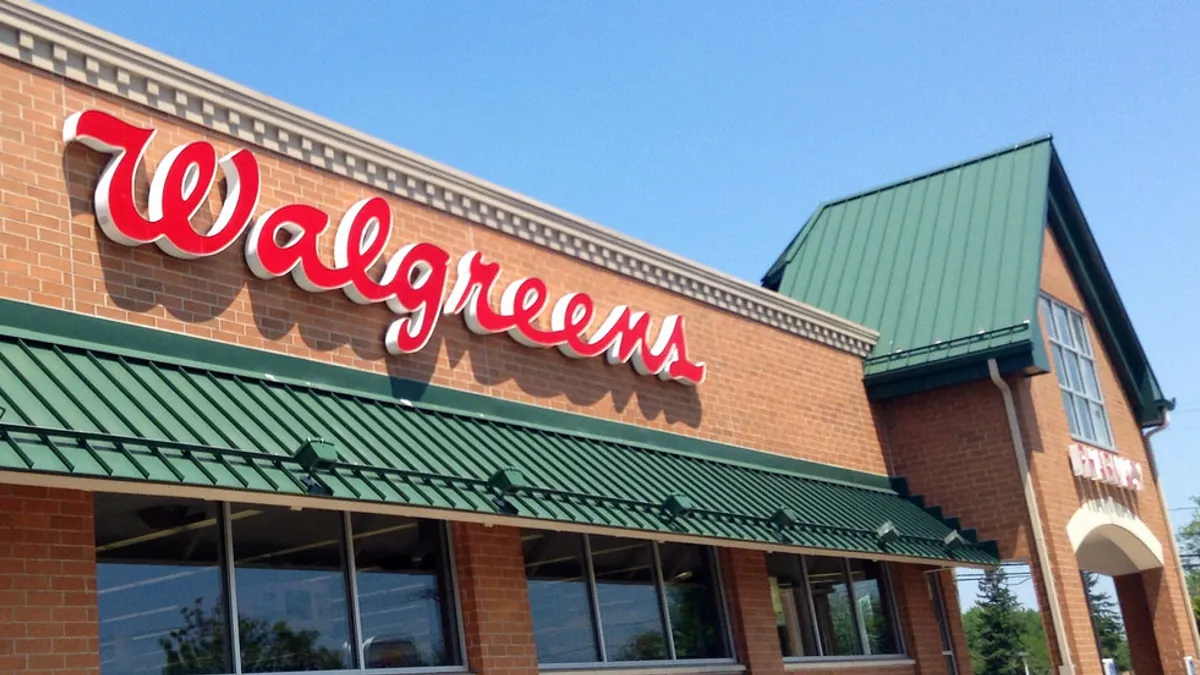Dive Brief:
-
Walgreens Boots Alliance on Tuesday told the Securities and Exchange Commission that it plans to close "approximately 200 locations in the United States."
-
The report follows the drugstore retailer's announcement in June that it would shutter about 8% of its U.K. store base, citing a difficult environment there. That equals some 200 U.K. stores, according to the company's SEC filing.
-
The initiative is part of the company's overall effort to realize more than $1.5 billion of annual cost savings by fiscal 2022, according to the filing.
Dive Insight:
Walgreens has a massive presence in the United States, and did even before it acquired some 2,000 Rite Aid stores after an outright merger with its rival was foiled by antitrust concerns.
"Given that these closures will represent less than 3 percent of our stores overall, and given that we have multiple locations in many markets, we anticipate minimal disruption to customers and patients," a Walgreens spokesperson told Retail Dive in an email Wednesday. "We also anticipate being able to retain the majority of the impacted store team members in other nearby locations."
The closures come as the company is "undertaking a transformational cost management program to accelerate the ongoing transformation of our business, enable investments in key areas and to become a more efficient enterprise," the spokesperson also said.
That makes even a substantial reduction in its footprint somewhat understandable, as the company makes adjustments to its service areas, according to GlobalData Retail Managing Director Neil Saunders. But some of those stores are vulnerable because Walgreens itself failed to attend to their health, he told Retail Dive in an email, saying, "Not all of these closures could have been avoided with an alternative strategy, but some of them could have been."
Walgreens in the U.S., like most drugstore retailers, have failed to take full advantage of the boom in beauty sales, for example, and the front areas of their stores in general tend to be lackluster at best, according to Saunders.
In its most recent quarter, retail sales fell 2.9% year over year, reflecting store closures after the acquisition of Rite Aid stores, as store comps fell 1.1%, the retailer said in June. Net earnings in the quarter fell 23.6% to $1 billion, and operating income fell 24.7% to $1.2 billion. The retail sales decline, along with "reimbursement pressure in pharmacy," hit adjusted gross profit, which fell 3.9% year over year, the company said.
"Although some of the closures may be the result of locations where demographics have changed or where there is duplication from other stores, some shops will also be closing because of weakening sales performance. In these cases, Walgreens need to look at its own lack of investment and focus in building a compelling retail proposition," Saunders said, noting that applies in both countries. "As a business, Walgreens has been very good at engineering bottom line growth through acquisitions. However, it has been less good at driving top line growth from innovation on the retail slide of its business. The price of this lack of thinking is that customers find alternatives and some stores see sharp declines."













